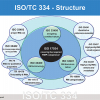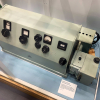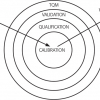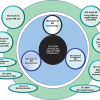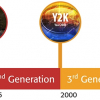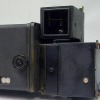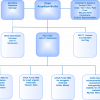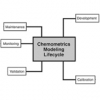Quality Matters Columns
John Hammond finishes his magnum opus on “Four Generations of Quality” with a look at what is science fiction and what is science fact. He considers what may turn out to be “fact” in the future for each of the preceding eight articles in the series.
John Hammond has taken a break from his Four Generations magnum opus and reports on the recent meeting of the ISO technical committee on reference materials (ISO TC 334).
This article looks at three related spectroscopic techniques/tools in the toolbox, namely, Fluorescence, near infrared (NIR) and Raman; and discuss the “what”, “where” and “how” of these techniques are being used to improve the quality of the measurement processes associated with them.
The latest in this series of “Four Generations of Quality” considers the essential component that controls our modern instrument systems and the associated concept of data integrity that is fundamental to the quality of the data being generated.
John Hammond continues his Four Generations of Quality series and starts to look at changes that will affect our activities into the future.
John Hammond continues his journey through four generations of quality, this time focusing on some of the specific Quality “tools” in use in both the ISO and GxP environments; how they are defined, applied and used; and how they have evolved with time.
John describes the similarities and differences between the two standards and likens their developments to a pair of parallel railway tracks that occasionally join through the points. John charts the history of GLP, GMP and GCP from before the 1940s, when, as far back as 1906, the US passed the Pure Food and Drug Act.
John Hammond continues his series of Quality Matters Columns looking at Four Generations of Quality, with one on the developments of the ISO Technical Committee responsible for reference materials to its latest incarnation as a Technical Committee.
John Hammond continues his journey through four generations of quality with “’Don’t risk it’. Accreditation standards and their role in quality assurance”. John reviews the two main ISO 17000 series accreditation standards—ISO/IEC 170251 and ISO 17034—their impact on quality assurance, testing or calibration laboratories, and how these standards have evolved and continue to be implemented.
This article concentrates on the International Organization for Standardization (ISO) organisation, its standards and their place within the Quality environment. By definition, it discusses the role of ISO in the administration and control of these standards and their evolution and harmonisation into the standards currently in existence.
John Hammond describes the start of a new mini-series of column articles and what you can look forward to in the next few issues.
What can quality sustems tell us about PCR testing for COVID-19? Peter Jenks has some concerns.
The Quality Matters Column highlights how the reference material industry has grown. Peter Jenks asks for your help in rerunning a 2001 survey with aim of establishing how users’ use of and experience with reference materials has changed. Whilst most questions are optional, such surveys are of the greatest value if most questions are answered. We hope you can spend a few minutes to complete the survey at https://www.spectroscopyeurope.com/reference-material-survey-2019.
Some compliance requirements would seem to make impossible demands on the performance specification of “fitness for purpose” for ultraviolet spectrometers; Chris and John unravel what’s going on.
Peter Jenks is thinking about the new definition of the kilo, and other SI units, in “The kilo, the mole and the commutability of a result to activity”. However, he is more concerned with maintaining accurate laboratory measurements over time, which is crucial to making data comparable.
Peter Jenks makes a welcome return to the Quality Matters Column and raises the radical idea of secondary producers of certified reference materials paying for the use of the primary CRMs. How may this affect the supply and price of secondary CRMs?
John Hammond updates us on news from the latest ISO/REMCO meeting and implementation of the new 17000 series standards.
Chris Burgess and John Hammond are back with an “Update on the modernisation of the spectroscopic General Chapters in the United States Pharmacopeia (USP)”. They review progress over the last three years and particularly on the changes intended in the USP Review Cycle 2015 to 2020.
John Hammond updates us on recent developments with the ISO 17xxx series of standards. John continues with news of standards particularly relevant to readers.
Peter Jenks and Alan Nichols embark on “ISO/IEC 17025: a never-ending journey”. They describe what is behind this recent standard and give valuable advice as to what to expect from an audit. Newcomers may find the requirements daunting, but Peter and Alan’s guidance will prove most helpful.


